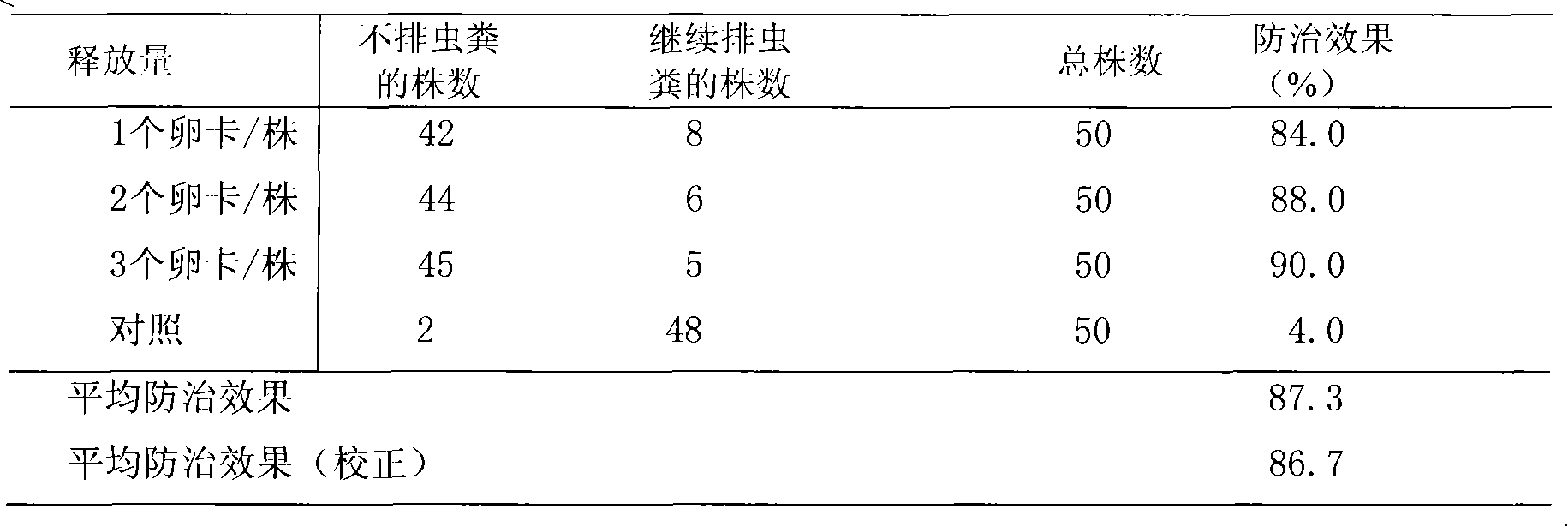Artificial propagation technology of mallambyx raddei dastarcus helophoroides and technology for applying dastarcus helophoroides for controlling mallambyx raddei
A technology of sending velvet to carapace and artificial propagation, which is applied in application, hunting equipment, animal husbandry, etc., and can solve the problems of difficult large-scale implementation, high cost, and difficult application of pesticides
- Summary
- Abstract
- Description
- Claims
- Application Information
AI Technical Summary
Problems solved by technology
Method used
Image
Examples
Embodiment 1
[0069] The artificial breeding and industrialized mass production of embodiment Yishan long-tailed long-tailed beetle:
[0070] In 2006, in Meihekou City, Jilin Province, a breeding center was established in Meihekou City, Jilin Province, specializing in the mass production and breeding of Alpinia longis. From February to April 2007, the artificial breeding work was started, and a large number of adults were produced.
[0071] Before the 40,000 larvae of the alternative host (a kind of longhorn beetle) were used up, another 20,000 larvae of Alpinia cerevisiae were used, and the same method was used to inoculate and reproduce the velvet beetle, and 82,000 adults of the longhorn beetle were raised. The produced 40,000 adults were directly released in the forest; the other 40,000 adults were used for large-scale breeding and laying eggs, and then made into egg cards and then released eggs for control.
[0072] A large number of adults will be obtained from May to June, and they wi...
Embodiment 2
[0073] Embodiment two, the effect of applying the present invention:
[0074] In November 2006, using the technology of the present invention, as of September 2007, more than 80,000 adult beetle beetles and 50,000 egg release cards (containing 7.5 million eggs) were bred. The reproduced adults are calculated according to the male-to-female ratio of 1:1. The number of females is at least 40,000. The average number of eggs laid by each female is at least 700. When the eggs are hatched and larvae grow and emerge into adults Calculated on a 50% basis, more than 5 million adult beetle beetles can be produced in a year; More than 2.5 million Chestnut beetle larvae or pupae can be parasitized to death; the lifespan of the adult beetle beetle is between 3 and 6 years. If calculated by 3 years, more than 5 million heads will be produced in the second year from the first year The female velvet beetle adults can lay 1.75 billion eggs on the basis of 50%, and more than 900 million velvet...
Embodiment 3
[0075] Embodiment three, the effect of large-scale release of eggs in the forest to prevent and control Lishan longhorn beetle:
[0076] In Meihekou City of Jilin Province and Kuandian County, Huanren County and Fushun County of Liaoning Province, a total of 60 experimental forests were established in oak forests with different Lishan beetle population densities and different slopes, with a total area of 2400 mu. The control effect of releasing eggs in the forest was observed. The survey results of the three egg card release test sites in Meihekou showed that the parasitism rate of the larvae of Chestnut beetle was 86.7% (corrected parasitism rate) in the year of release.
[0077] Investigation on the effect of prevention and treatment:
[0078] At the Jiguan Mountain Forest Farm in Meihekou City, Jilin Province, GPS positioning was used to select points according to the degree of forest damage in light, medium, and severe cases. A total of 13 release points were selected, ...
PUM
 Login to View More
Login to View More Abstract
Description
Claims
Application Information
 Login to View More
Login to View More - R&D
- Intellectual Property
- Life Sciences
- Materials
- Tech Scout
- Unparalleled Data Quality
- Higher Quality Content
- 60% Fewer Hallucinations
Browse by: Latest US Patents, China's latest patents, Technical Efficacy Thesaurus, Application Domain, Technology Topic, Popular Technical Reports.
© 2025 PatSnap. All rights reserved.Legal|Privacy policy|Modern Slavery Act Transparency Statement|Sitemap|About US| Contact US: help@patsnap.com

